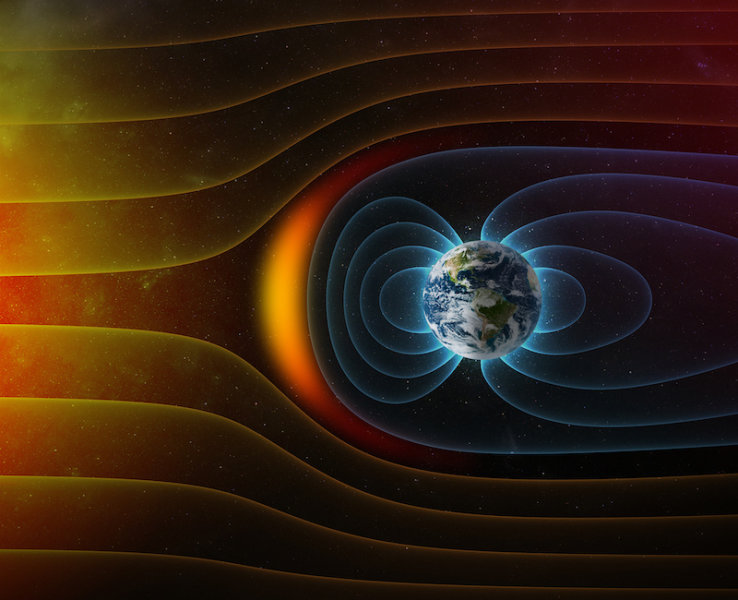How did the chemical makeup of our planet's core shape its geologic history and habitability?
Life as we know it could not exist without Earth's magnetic field and its ability to deflect dangerous ionizing particles from the solar wind and more far-flung cosmic rays. It is continuously generated by the motion of liquid iron in Earth's outer core, a phenomenon called the geodynamo.
Despite its fundamental importance, many questions remain unanswered about the geodynamo's origin and the energy sources that have sustained it over the millennia.
New work from an international team of researchers, including current and former Carnegie scientists Alexander Goncharov, Nicholas Holtgrewe, Sergey Lobanov, and Irina Chuvashova examines how the presence of lighter elements in the predominately iron core could affect the geodynamo's genesis and sustainability. Their findings are published by Nature Communications.
Our planet accreted from the disk of dust and gas that surrounded our Sun in its youth. Eventually, the densest material sank inward in the forming planet, creating the layers that exist today -- core, mantle, and crust. Although, the core is predominately iron, seismic data indicates that some lighter elements like oxygen, silicon, sulfur, carbon, and hydrogen, were dissolved into it during the differentiation process.
Over time, the inner core crystallized and has been continuously cooling since then. On its own, could heat flowing out of the core and into the mantle drive the geodynamo? Or does this thermal convection need an extra boost from the buoyancy of light elements, not just heat, moving out of a condensing inner core?
Understanding the specifics of the core's chemical composition can help answer this question.
Silicates are predominant in the mantle, and after oxygen and iron, silicon is the third-most-abundant element in the Earth, so it is a likely option for one of the main lighter elements that could be alloyed with iron in the core. Led by Wen-Pin Hsieh of Academia Sinica and National Taiwan University, the researchers used lab-based mimicry of deep Earth conditions to simulate how the presence of silicon would affect the transmission of heat from the planet's iron core out into the mantle.
"The less thermally conductive the core material is, the lower the threshold needed to generate the geodynamo," Goncharov explained. "With a low enough threshold, the heat flux out of the core could be driven entirely by the thermal convection, with no need for the additional movement of material to make it work."
The team found that a concentration of about 8 weight percent silicon in their simulated inner core, the geodynamo could have functioned on heat transmission alone for the planet's entire history.
Looking forward, they want to expand their efforts to understand how the presence of oxygen, sulfur, and carbon in the core would influence this convection process.
The authors were supported by the Academia Sinica, the Ministry of Science and Technology of Taiwan, the National Natural Science Foundation of China, the Foundation for the Advancement of Outstanding Scholarship, the Chinese Academy of Science, the U.S. National Science Foundation, the Army Research Office, the Deep Carbon Observatory, and the Helmholtz Young Investigators Group.
Source: Carnegie Institution for Science. (2020, July 6). How does Earth sustain its magnetic field?. ScienceDaily. Retrieved July 13, 2020 from www.sciencedaily.com/releases/2020/07/200706140856.htm






